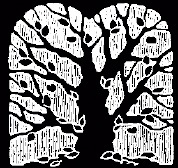It is not known exactly when the Jewish community first rented a hall in which to assemble and hold services. For some time prior to 1853, they met together for religious worship in an upper story of what was then No. 22 Baltimore Street. In that year the place of meeting was changed to an upper room in the building on the northwest corner of Baltimore and Centre Streets, opposite the English Lutheran Church. In 1856 it was moved again, this time to the second floor of what was then known as the Semmes’ Law Building, now No. 7 Washington Street, where the Congregation remained until the present Temple was erected.
But the mere act of incorporating must have added a measure of solidarity to the zeal and spirit that caused this small band of Jews to join together for the observance of their religion. At the least, it created a feeling of permanence, and the need for a religious leader. On the 19th of November 1853, the Congregation concluded after due deliberation to engage a reader, and the services of Rabbi Juda Wechsler were secured. Rabbi Wechsler remained in charge one year. He was succeeded by Rabbi Hermann who officiated for two years, by Rabbi Isaac Strauss for one year, by Rabbi Freudlich for one year, and by Rabbi A. Laser for two years, until 1860. Rabbi Isaac Gottlieb officiated until 1864, when Rabbi Isaac Baum was engaged. It was during his tenure that the Temple was built.
Just when the idea of erecting a Synagogue was born is unknown. It was not until October 30, 1865, when Andrew Stewart and Jacob S. Shriver conveyed to Wolfe Greenebaum, Isaac White, Samuel Sonneborn, Joseph Sonneborn and Isaac Miller, Trustees of Baair Cheiim Congregation, a lot of ground fronting 40 feet on South Centre Street and running back 100 feet along Union Street to Ash Alley. (On November 23, 1898, the Congregation purchased an additional 4 feet, 4 inches of ground adjoining the original lot on the South side for $150.00. The deed was to Murray White and Lewis Rosenbaum, Trustees of B’er Chayim Congregation.)
Prior to the purchase of the original lot there were uniform dues of 25 cents a week. Those who could afford it made additional contributions. Obviously this income barely accounted for expenses. There were fines for talking during services, for chewing at services, for gathering in front of the Synagogue, for bringing children under five years of age to services, for leaving the Synagogue during services without permission of some officer. Memorial services, marriages, and deaths brought additional revenue. Until about 1881, Maryland law required each marriage to be proclaimed publicly on three successive Sabbaths. These proclamations were made by the sexton for which the Congregation received from one to five dollars. Requests for funds to help defray the cost of a new Temple were made of other communities. The treasurer’s book shows $5,530.15 was raised. Baltimore friends contributed $1,091.00; Frederick added $11.00; $13.15 was raised by a “ball committee;” $1,500.00 was obtained on a mortgage to a building association on which the last payment was made January 1, 1875; the balance was contributed by Cumberland Jewry.
J. B. Walton, a prominent contractor of the time, constructed the Temple building in 1864. The total cost was $7,427.02, according to the treasurer’s book, of which Mr. Walton received $4,749.37. The discrepancy of expenditures over receipts is not explained except that total amount was transferred from the Building Fund to the Congregation’s general account.
One of the requisites for the dedication was the acquisition of a second Torah. Joseph Sonneborn, on one of his buying trips to New York, made the purchase and brought it back with him. He kept it in his home, located on the Northwest corner of Liberty and Harrison Streets.В The dedication included a procession from the Sonneborn home to the Temple, one short and one long block away. Thereupon a dispute arose as to who should carry the Torah to the Temple. Mr. Sonneborn claimed it as his privilege for he had made the purchase and watched over it with loving care in his own home. The president of the Congregation thought he should have the honor by virtue of his office. Although hard feelings over the incident lingered for some time, it was settled by Mr. Sonneborn carrying the Torah from his home to the rostrum where it was handed to the president who placed it in the Ark.
The dedication of a House of Worship is an event of first importance in the life of any Congregation. Rabbi B. Szold (the father of Henrietta Szold) and Rabbi H. Hochheimer, of Baltimore, and Rabbi Isaac Mayer Wise, of Cincinnati, were invited to officiate with Rabbi Baum. The entire proceedings were open to the public and the new Temple was filled to overflowing.
The event was entirely successful except for the fact that Rabbi Wise did not appear as he had promised. He arrived the following Friday and was chagrined to learn he was a week late. The mistake was not an altogether unhappy one for Rabbi Wise led the services in a kind of second dedication.
Although the early Jewish community started as orthodox, the movement of reform then abroad in the land was felt early in Cumberland, and old customs and symbols were gradually discarded. The services of a Shochet had been dispensed with sometime in the 1850s, and the separation of men and women at services was no longer felt necessary even before 1867, when the Temple was built.


